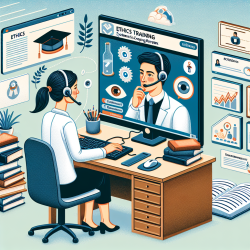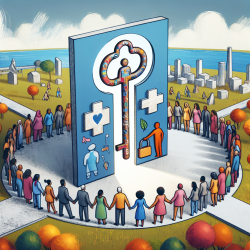Enhancing IEP Meetings with Data-Driven Strategies
Individualized Education Program (IEP) meetings are crucial in shaping the educational journey of students with special needs. As school social workers, your role is pivotal in ensuring these meetings are productive and focused on achieving the best outcomes for children. In this blog, we'll explore how to make IEP meetings more effective by utilizing data-driven strategies and the benefits of incorporating telehealth services, such as online speech therapy for autism.
The Power of Data in IEP Planning
Data is a powerful tool in making informed decisions during IEP meetings. By analyzing data, you can identify patterns, strengths, and areas for improvement in a student's progress. Here are some ways to leverage data effectively:
- Set Clear Goals: Use data to establish specific, measurable, achievable, relevant, and time-bound (SMART) goals for each student.
- Track Progress: Regularly review data to monitor a student's progress toward their goals, allowing for timely interventions if necessary.
- Inform Decision-Making: Data provides an objective basis for decisions, helping to create tailored strategies that address the unique needs of each student.
Incorporating Telehealth in IEPs
Telehealth services, such as online speech therapy, have become increasingly popular in schools. They offer flexible and accessible solutions for students, particularly those with autism, who may benefit from speech therapy. Here’s how telehealth can enhance IEP meetings:
- Accessibility: Telehealth removes geographical barriers, ensuring students receive consistent therapy regardless of location.
- Flexibility: Online sessions can be scheduled at convenient times, accommodating the student's routine and reducing disruptions to their school day.
- Comprehensive Data: Telehealth platforms often provide detailed session reports, offering valuable data to track progress and inform IEP discussions.
Inspiring Change Through Collaboration
IEP meetings are most successful when they are collaborative, involving educators, therapists, parents, and students. Here are some tips to foster a collaborative environment:
- Encourage Open Communication: Create a safe space for all participants to share their insights and concerns.
- Focus on the Student: Keep the student's best interests at the forefront of every discussion, ensuring their voice is heard.
- Utilize Technology: Use tools like video conferencing to include all stakeholders, even those who cannot be physically present.
Conclusion
By integrating data-driven strategies and telehealth solutions into IEP meetings, school social workers can inspire meaningful change and create impactful outcomes for students. The combination of clear goals, regular progress tracking, and collaborative efforts ensures that each student receives the personalized support they need to thrive.










